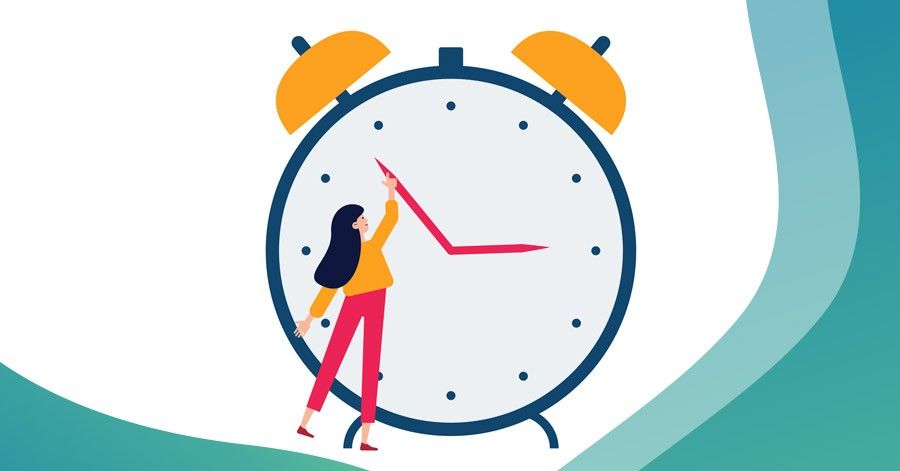Daylight saving time has its origins back before the Industrial Revolution, but it certainly has no shortage of modern-day critics. Given that the practice was first proposed in 1895 and first adopted in the 1900s, largely to conserve coal during wartime, we’d say it’s more than fair to debate its current relevance. We also think it’s important to clear the air: in general, daylight saving time doesn’t directly benefit anybody.
When we “fall back”, or set the clocks back an hour for daylight saving, we often say we’re looking forward to “gaining” an hour of sleep. And when we “spring forward” by setting the clocks ahead, we bemoan the one hour of sleep we’ve “lost”. The truth is, we’re not gaining or losing anything — our bodies are simply being deceived by the different time shown on the clock. However, that doesn’t mean there’s no effect on our minds or bodies. Below, we’ll discuss how daylight saving can throw off our rhythms and health, and how that in turn can impact our driving abilities.
A rough time for circadian rhythms
Nobody wants to end up going deep into debt, and sleep debt is no exception. According to the Sleep Foundation, sleep debt refers to the difference between the amount of sleep a person needs and the amount they actually end up getting. For example, if you need to hit the golden eight hours of sleep, but only manage to sleep for six hours, you have two hours of sleep debt. And that’s just for that night!
Sleep debt is cumulative, and it can really throw you out of whack as it builds upon itself. Regularly getting less sleep than you need can lead to a higher risk of diabetes, hypertension, heart disease, and stroke. In the short term, lack of sleep still has significant consequences, such as affecting your focus at work, school, or while driving.
If we’re not careful, plenty of everyday activities can lead to sleep debt: work hours, commuting, socializing, and watching TV are the main culprits in the US. And, while there’s little evidence to support the idea that daylight saving time actually affects the amount of time we sleep, that doesn’t mean it isn’t disruptive.
Daylight saving time’s alterations to our sleep-wake cycle can upset sleep for up to a week, according to some research. In fact, the cumulative effect of five consecutive days of earlier rise times suggests a net loss of sleep over the course of the week.
Essentially, daylight saving causes a disruption to our circadian rhythm cycles (24-hour cycles that coordinate mental and physical systems throughout the body). When properly aligned, circadian rhythms promote restful, restorative sleep. A disturbance to these cycles, however, can lead to behavioral and mood upsets.
“Falling” and “springing” at the expense of safety?
So, how does daylight saving time affect safety behind the wheel? When disrupted from their natural cycle, as in the case of daylight saving, our circadian rhythms can cause a loss of sleep, or worse. Plenty of people experience physical, mental, and behavioral changes following this disturbance. Unfortunately, this can lead to drowsiness, which can lead to more car accidents.
Recent research has found that springing forward — the springtime practice of moving clocks ahead by an hour — leads to a 6% increase in fatal car accidents in the United States. This is due both to people disrupting their normal sleep patterns and driving to work in darkness. Research also shows a spike in strokes, workplace injuries, and other complications following the leap. Shockingly, other studies have even shown that daylight saving can lead to harsher judicial sentencing.
There are changes in car accident patterns resulting from “falling back” as well, with a decline in morning accidents and a spike in evening accidents. What’s more, there’s even a potential correlation between daylight saving time and heart health — negative in the spring, and positive in the fall. Hospitals report a 24% spike in heart attack visits in the spring, and a drop of 21% in the fall.
Driving safely during daylight saving
With the end of daylight saving time coming up on November 5th, now is as good a time as any to brush up on your safe driving habits. Maintaining a proper following distance, adjusting (and using!) your mirrors properly, and avoiding distracted driving: these are only a few of the basic safety precautions you should take that may quite literally save lives.
To avoid putting others at risk, it’s also essential to stay in tune with your body and recognize when you’re just too tired to drive. Drowsy driving causes thousands of injuries and deaths every year — as we’ve discussed, daylight saving may only contribute to these numbers.
As a starting point, here is a list of simple steps you can take to be safer on the road.
- Maintain your normal sleep schedule as much as possible. Remember that regardless of whether it’s time to spring forward or fall back, you will not be gaining or losing any sleep. Trying to adjust your sleep or wake times based on daylight saving will only make you more tired and lead to lost sleep over the course of the week.
- Make sure your vehicle is in good working order. Double check that your safety inspection is up to date, consider a seasonal tune-up, and make sure that everything from your headlights to your windshield wipers are in good shape.
- Don’t rush! No matter where you’re going or when you’re driving there, make sure you give yourself plenty of extra time to reach your destination without rushing. If you’re in a hurry, you’re more likely to speed, tailgate, and generally let driving safety fly out the window. Add in drowsy driving and that’s a recipe for disaster.
- Slow down. As the sun rises earlier and sets later, your visibility is affected. It becomes more difficult to see crosswalks, stop signs, and pedestrians, so make sure you’re taking your time, abiding by the speed limit, and staying vigilant.
- We’ll say it again: slow down! We really can’t emphasize this one enough. Make sure you know what the speed limit is at all times and reduce your speed in rainy or otherwise hazardous conditions.
- Give fellow drivers their space and protect yours. Maintain a safe following distance from the car in front of you and try to maintain a space cushion between your vehicle and the one behind you. If you’re being tailgated, don’t feel pressured to speed up: instead, just move over a lane and let the tailgater pass. You can’t control their speed, but you’re in charge of yours.
Even if you dislike daylight saving (and we don’t blame you if you do) it seems like it’s here to stay, at least for now. And, despite plenty of drawbacks, it can have its benefits. It leads to brighter mornings during the fall, which in turn can lead to better visibility on early morning drives. There are even some health benefits! Research has shown that, generally speaking, abundant morning light is better for sleep, our body clocks, and overall health. What’s more, in spring, the “extra hour” of daylight and warmer temperatures often encourage us to spend more time outside in the sun, which can lead to improved mood, reduced stress, and better physical health.
If nothing else, daylight saving time serves to remind us that our bodies are incredibly sensitive, even to seemingly small disruptions like a single extra or lost hour of sleep. Even an extremely safe driver can cause an accident if suffering from the negative effects of sleep debt and drowsy driving. At this time of year (and all year round) you can never be too prepared when it comes to car safety and insurance coverage.
From daylight saving to actual saving, it’s important to find an insurance company that keeps you covered all year long. Get a quote with Elephant today!
You may also like reading: Do car alarms really work?
Article last updated on November 1st, 2023 at 1:01 pm

